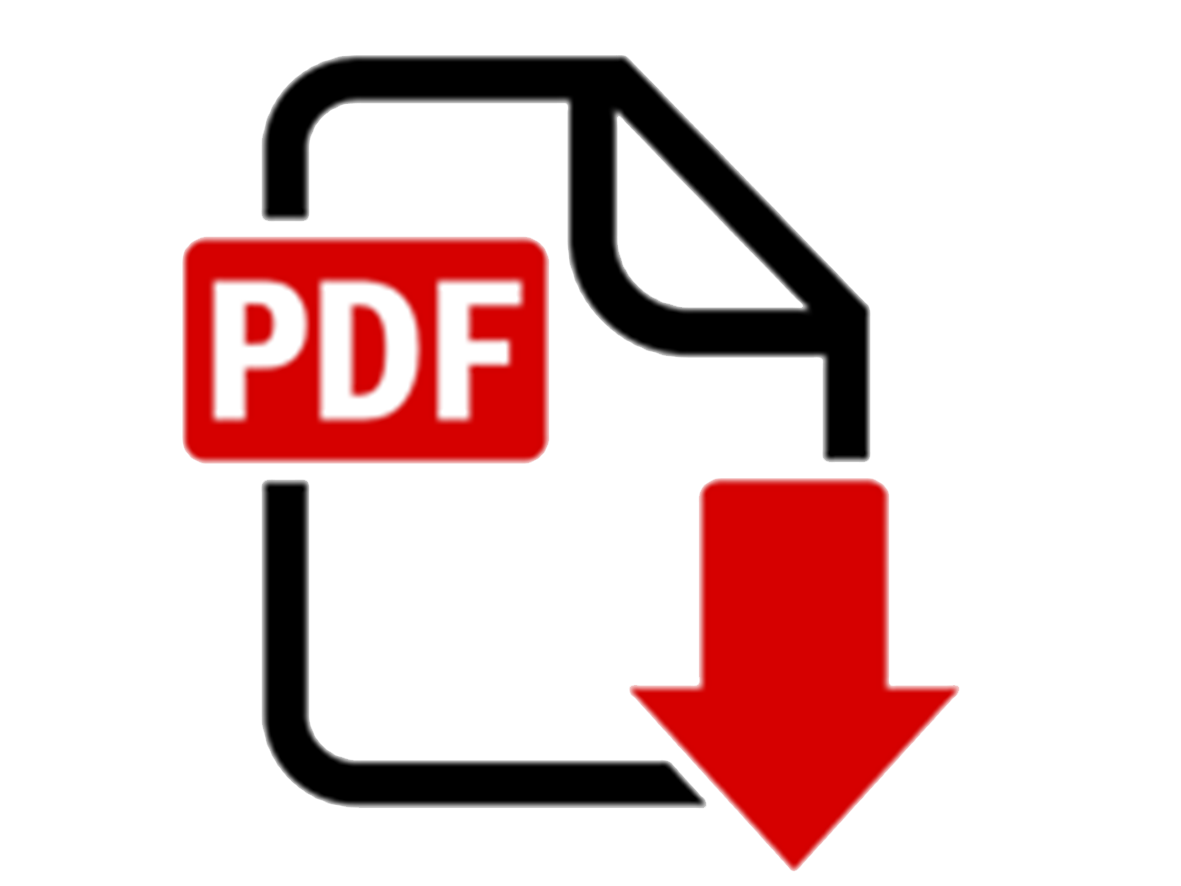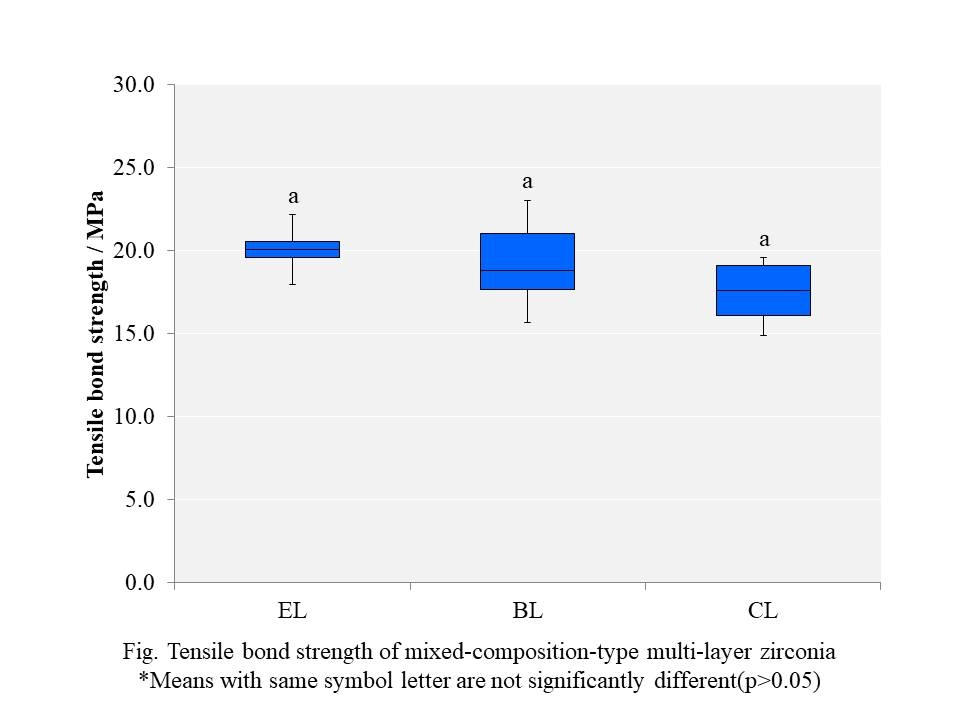IADR Abstract Archives
Effect of Yttria Content on Bond Strength of Multi-layer Zirconia
Objectives: We have recently developed a multi-layer zirconia disk (SHOFU DISK ZR Lucent Supra: L-Supra, Shofu) with mixed compositions, composed of 5Y-PSZ, which gives high translucency to the incisal portion, and 3Y-TZP, which gives high strength to the cervical portion of a restoration. Its wide clinical application is anticipated. However, bonding properties of such zirconia material having a layered structure with different compositions have not yet been clarified. The purpose of this study was to investigate the effect of different yttria contents in the mixed-composition-type multi-layer zirconia on its bond strength.
Methods: Adherends (15×15×2.0mm) were prepared from respective layers of L-Supra (enamel layer: EL; body layer: BL; cervical layer: CL), which were sandblasted with alumina (0.2MPa), and then bonded to a SUS rod with a resin cement (ResiCem, Shofu). Test specimens obtained were thermo-cycled (5-55°C, 20,000 cycles), and then measured for tensile bond strength using a universal testing machine (n=6).
Results: Yttria contents in the layers (EL, BL and CL) of L-Supra were 5.6mol%, 4.3mol% and 3.1mol%, respectively. Grain sizes (d50) were 0.72µm (EL), 0.61µm (BL) and 0.41µm (CL). Surface roughness values (Ra) after sandblasting were 0.29µm (EL), 0.29µm (BL) and 0.27µm (CL). Tensile bond strength values after thermo-cycling were 20.1MPa (EL), 19.2MPa (BL) and 17.5MPa (CL), which showed no significant difference between the layers (Tukey's Test, p>0.05).
Conclusions: The difference in the yttria content in the multi-layer zirconia did not affect the bond strength of its respective layers. The test results suggest that the mixed-composition-type multi-layer zirconia in this study is expected to exhibit clinically stable bonding properties.
Methods: Adherends (15×15×2.0mm) were prepared from respective layers of L-Supra (enamel layer: EL; body layer: BL; cervical layer: CL), which were sandblasted with alumina (0.2MPa), and then bonded to a SUS rod with a resin cement (ResiCem, Shofu). Test specimens obtained were thermo-cycled (5-55°C, 20,000 cycles), and then measured for tensile bond strength using a universal testing machine (n=6).
Results: Yttria contents in the layers (EL, BL and CL) of L-Supra were 5.6mol%, 4.3mol% and 3.1mol%, respectively. Grain sizes (d50) were 0.72µm (EL), 0.61µm (BL) and 0.41µm (CL). Surface roughness values (Ra) after sandblasting were 0.29µm (EL), 0.29µm (BL) and 0.27µm (CL). Tensile bond strength values after thermo-cycling were 20.1MPa (EL), 19.2MPa (BL) and 17.5MPa (CL), which showed no significant difference between the layers (Tukey's Test, p>0.05).
Conclusions: The difference in the yttria content in the multi-layer zirconia did not affect the bond strength of its respective layers. The test results suggest that the mixed-composition-type multi-layer zirconia in this study is expected to exhibit clinically stable bonding properties.


